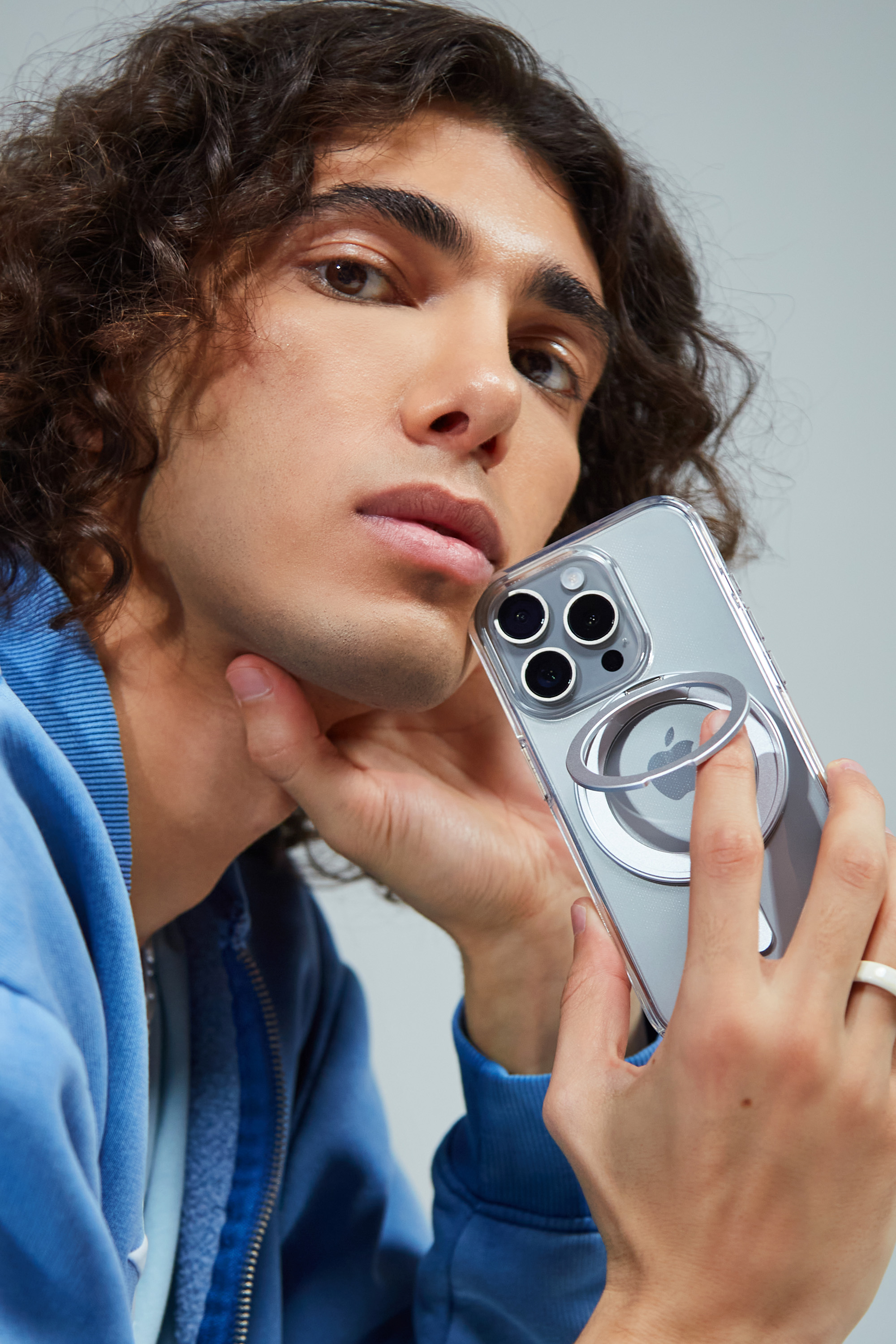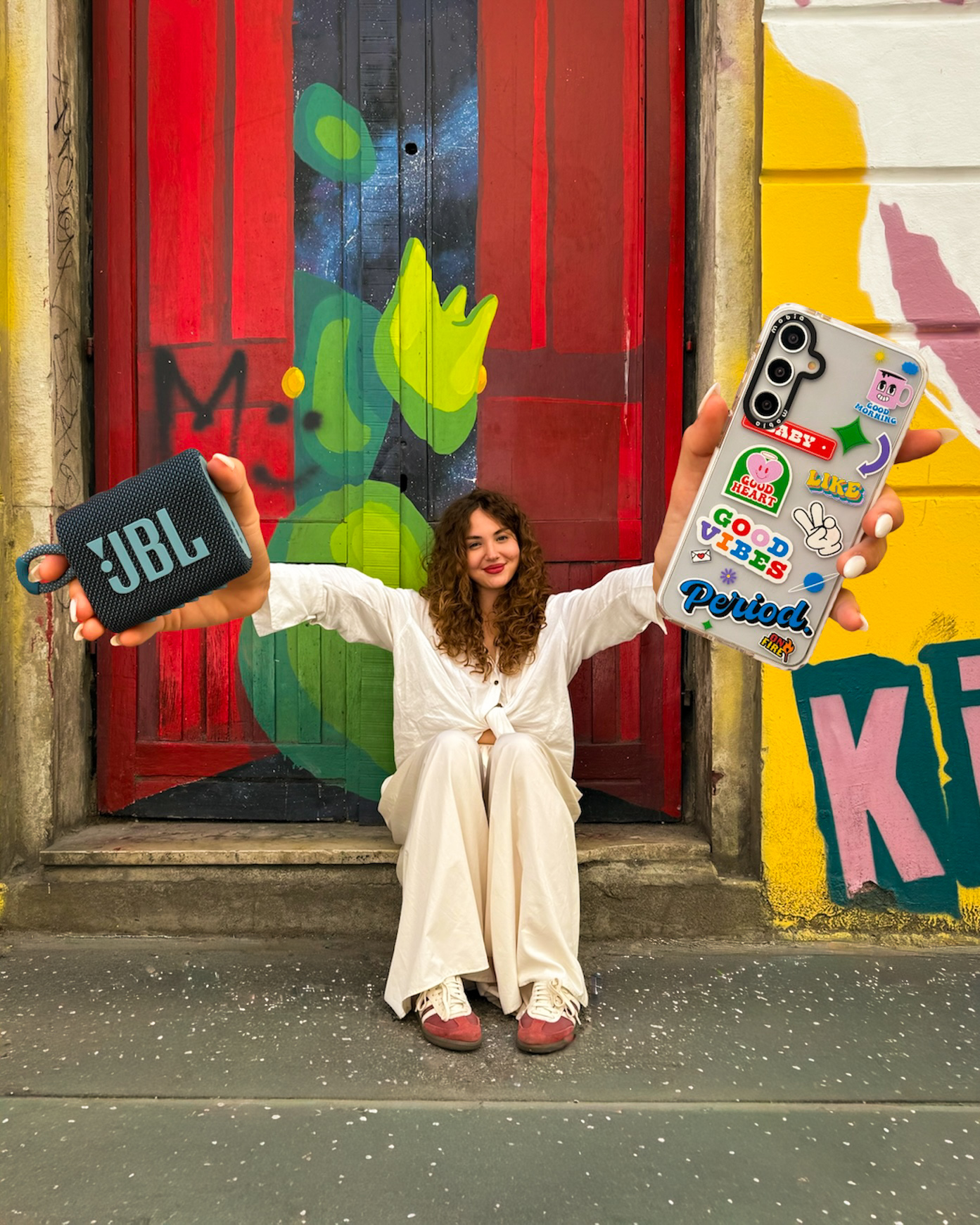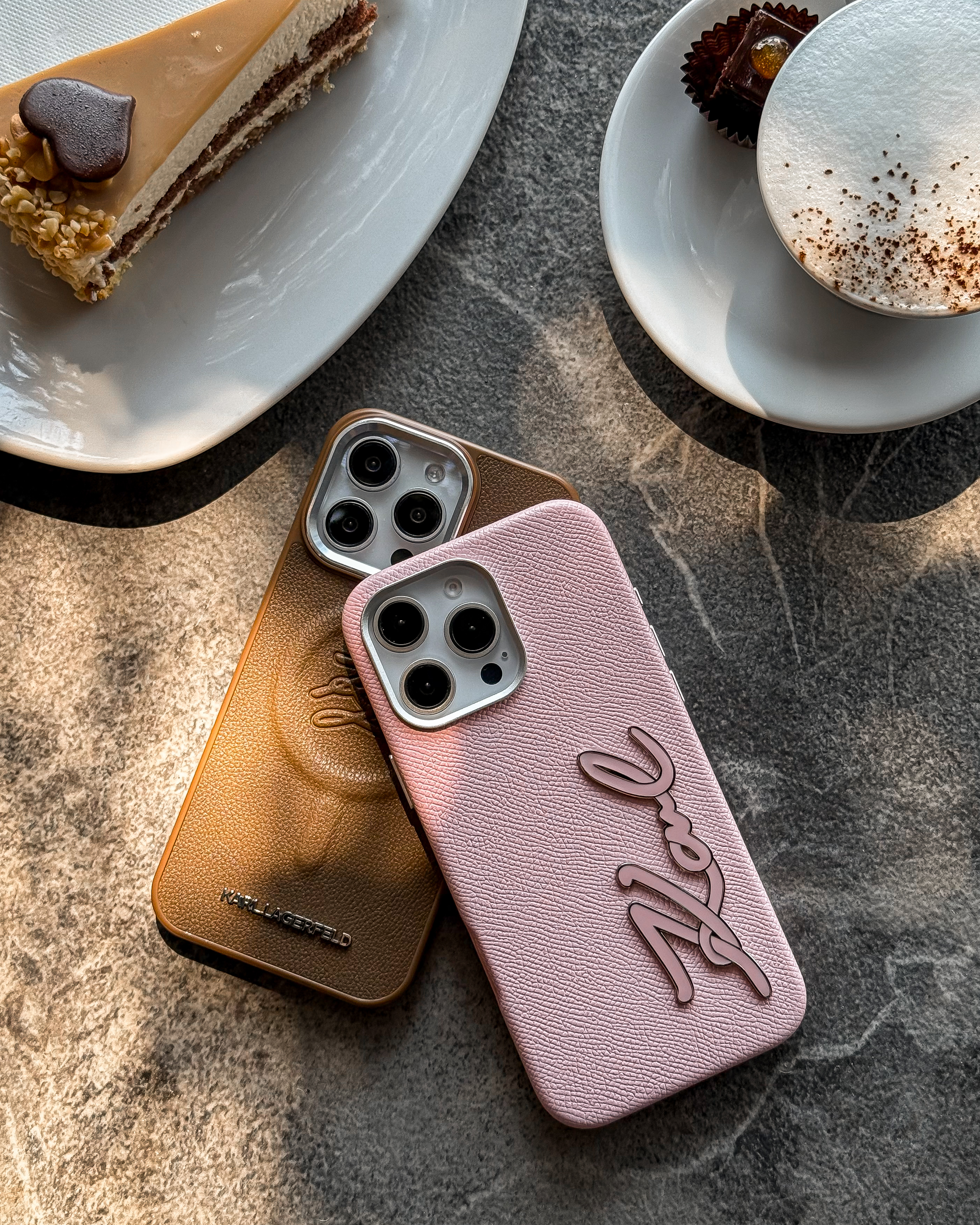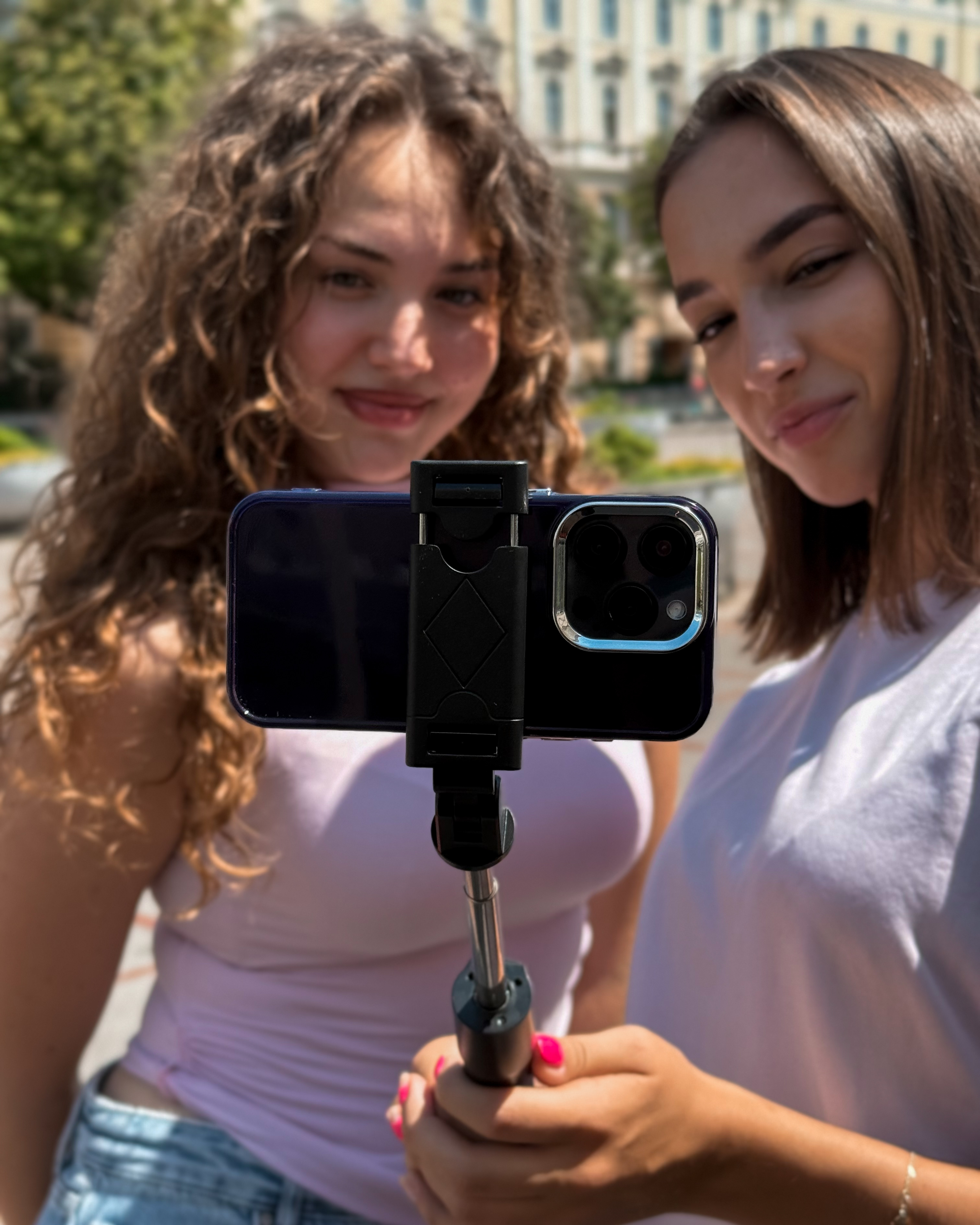Samsung
Frequently Asked Questions
Discover detailed information about Samsung products, their advantages, features, and how they connect with each other.
Whether you’re a longtime enthusiast or a new user, here you’ll find everything you need to know to make the most of your Samsung devices.
Samsung phone cases are made from various materials, each offering different levels of protection and style. In Mobia’s selection, you’ll find cases made from durable silicone that provides excellent shock absorption, such as the Ultra Lux Silicone Case for models like the iPhone 15. TPU (thermoplastic polyurethane) is another material used in Mobia’s cases, offering a balance between flexibility and strength. Some cases are also available in polycarbonate, known for its rigidity and impact resistance. These materials ensure your Samsung phone is well protected while giving you options that match your personal style.
Yes, there are waterproof cases for Samsung phones that provide reliable protection against water and moisture. These cases are designed with sealed edges and durable materials to prevent water from reaching your phone, making them ideal for outdoor activities, swimming, or rainy conditions. For the best protection, consider the Waterproof Dive Case and the Waterproof Float Case, both of which offer a high level of water resistance while ensuring your device remains safe in demanding conditions. Always check the waterproof rating to ensure it meets your specific needs.
Yes, you can personalize Samsung phone cases by adding various accessories. Customizing your case is an excellent way to express your personality and make your phone unique. You can complement them with phone straps, stickers, or PopSockets grips, which come in a wide range of styles to match your aesthetic while adding extra grip and functionality. Choose from different styles, colors, and materials to create a case that reflects your individuality while still providing protection for your device.
To clean and maintain your Samsung phone case, first remove it from the phone. Using a soft cloth dampened with water and mild soap, gently wipe the case to remove any dirt. Avoid using harsh chemicals or abrasive materials that could damage the case. Allow the case to air dry completely before putting it back on your phone. Regular cleaning helps maintain the appearance and durability of the case.
Yes, there are Samsung phone cases with built-in stands that allow you to prop up your phone for hands-free viewing. These stands are usually integrated into the back of the case and can be easily extended when needed. They are perfect for watching videos, making video calls, or reading without having to hold your phone. Some cases also offer adjustable stand angles for added convenience.
To properly install a case for your Samsung phone, first align the case with the phone, making sure all buttons and ports match up. Gently press the case onto the phone, starting from one corner and working your way around. Check that the case is securely attached and that all buttons and ports are accessible. Double-check to ensure the case does not interfere with the camera or screen edges.
Most Samsung phone cases provide a certain level of screen protection, primarily through slightly raised edges that prevent direct contact between the screen and flat surfaces when placed face down. However, while these raised edges help reduce the risk of scratches, they do not guarantee that the glass will not break in case of a drop.
For enhanced screen protection, consider flip cases that offer full front coverage, such as the Magnetic Flip Case, Clip Flip Case, Flip Case, and Mezzo Flip Case. These cases provide an extra layer of impact protection, helping to safeguard your screen during everyday use and accidental drops.
Yes, eco-friendly cases for Samsung phones are available, made from sustainable or biodegradable materials. These cases are designed to reduce environmental impact without compromising the protection of your device. Many eco-friendly options use recycled plastics and plant-based polymers to create durable and stylish cases.
For an excellent balance of sustainability and protection, consider the PanzerGlass D30 case, which is made from environmentally conscious materials while offering outstanding durability and drop resistance. Choosing an eco-friendly case is a great way to protect both your phone and the environment.
Yes, eco-friendly cases for Samsung phones are available, made from sustainable or biodegradable materials. These cases are designed to reduce environmental impact without compromising the protection of your device. Many eco-friendly options use recycled plastics and plant-based polymers to create durable and stylish cases.
For an excellent balance of sustainability and protection, consider the PanzerGlass D30 case, which is made from environmentally conscious materials while offering outstanding durability and drop resistance. Choosing an eco-friendly case is a great way to protect both your phone and the environment.
Samsung phone cases protect against drops and impacts by using shock-absorbing materials and reinforced designs. Features such as air cushions, reinforced corners, and multi-layer construction help distribute and absorb impact forces, reducing the risk of damage to your phone. Many of these cases are tested to meet or exceed military drop protection standards.
For enhanced drop protection, consider cases like the Armour Case and the Anti-Drop Case, both designed to provide superior impact resistance while maintaining a sleek appearance.
Yes, many Samsung phone cases are designed for wireless charging. In particular, thin cases allow wireless charging without needing to remove the case. However, if your case is especially thick or made of metal, it may interfere with the charging process. Always check the case specifications to ensure it is compatible with wireless charging before purchase. Some cases feature built-in magnets or are thin enough to work seamlessly with magnetic mounts. Make sure the case doesn’t have thick material layers or metal components that could disrupt the magnetic connection.
To apply a Samsung screen protector without bubbles, first thoroughly clean the screen with the included microfiber cloth and alcohol wipe to remove dust and fingerprints. Carefully align the protector with your phone, ensuring that the openings for buttons and sensors are not blocked.
Remove the adhesive layer and place the screen protector starting from one edge, using a credit card or the provided smoothing tool to remove bubbles as you apply it. If bubbles remain, gently lift the protector and reapply it, then use the tool to push out any remaining air pockets.
If you want a perfect, hassle-free installation, our staff can install it for you free of charge in our store.
Indeed, there are many types of Samsung screen protectors. Tempered glass, which is hard and thick, offers excellent resistance to scratches and impacts, while plastic protectors are thinner and less durable but still provide adequate protection. Additionally, there are specialized screen protectors with various features such as anti-glare protection, fingerprint resistance, privacy filters, and blue light blocking, allowing users to choose based on their personal preferences and needs.
Cleaning the screen protector of your Samsung phone is quick and easy. Start by using a microfiber cloth to remove oil smudges, fingerprints, dust, and stains. For more stubborn dirt, dampen the cloth with water or a screen cleaning solution such as Mobia Super Cleaner and gently wipe the protector.
Avoid using harsh chemicals or abrasive materials like sandpaper, as they can scratch the surface and reduce the clarity of the protector. Regular cleaning will help keep your screen looking clean and like new.
High-quality Samsung screen protectors are designed to maintain the device’s touch sensitivity. Specifically, tempered glass protectors not only keep the device highly responsive but also provide a smooth touch experience. Choosing a screen protector with non-standard or inappropriate thickness may slightly reduce touch sensitivity. If the screen protector is of good quality, you will have the same level of responsiveness as if no protector were applied.
Tempered glass for Samsung phones offers all the advantages. Thermoplastics are very strong, preventing cuts and impacts from reaching the screen. Moreover, it blends seamlessly with your display, making it easy to use. Additionally, the material used in tempered glass screen protectors features oleophobic coatings that help resist fingerprints and smudges, allowing you to keep your screen clean for longer.
The process of removing a Samsung screen protector or glass is quite simple. Start by gently lifting one corner of the protector with your fingernail or a thin piece of plastic card. Begin peeling it off slowly across the screen. It’s recommended to do this carefully to avoid leaving adhesive residue on the screen. Use a microfiber cloth and a small amount of screen cleaning solution to remove any remaining residue if necessary.
In general, Samsung screen protectors, especially tempered glass ones, are not designed for reuse. As they are used, the adhesive backing loses its effectiveness, and the protector will not adhere properly if reapplied. Ideally, a removed protector should be replaced with a new one to ensure your device remains protected and the screen functions properly.
There are Samsung screen protectors that include a privacy filter. These protectors limit the viewing angle of the screen so that people next to you can barely see it. This is especially important when you need to protect sensitive information from prying eyes while in crowded places.
Some Samsung screen protectors are designed to protect against blue light. These blue light filtering protectors help reduce the amount of harmful blue light emitted from your phone’s screen, which can cause eye strain and disrupt sleep patterns. They are an excellent choice for those who spend long hours using their phones, especially in the evening or low-light conditions.









